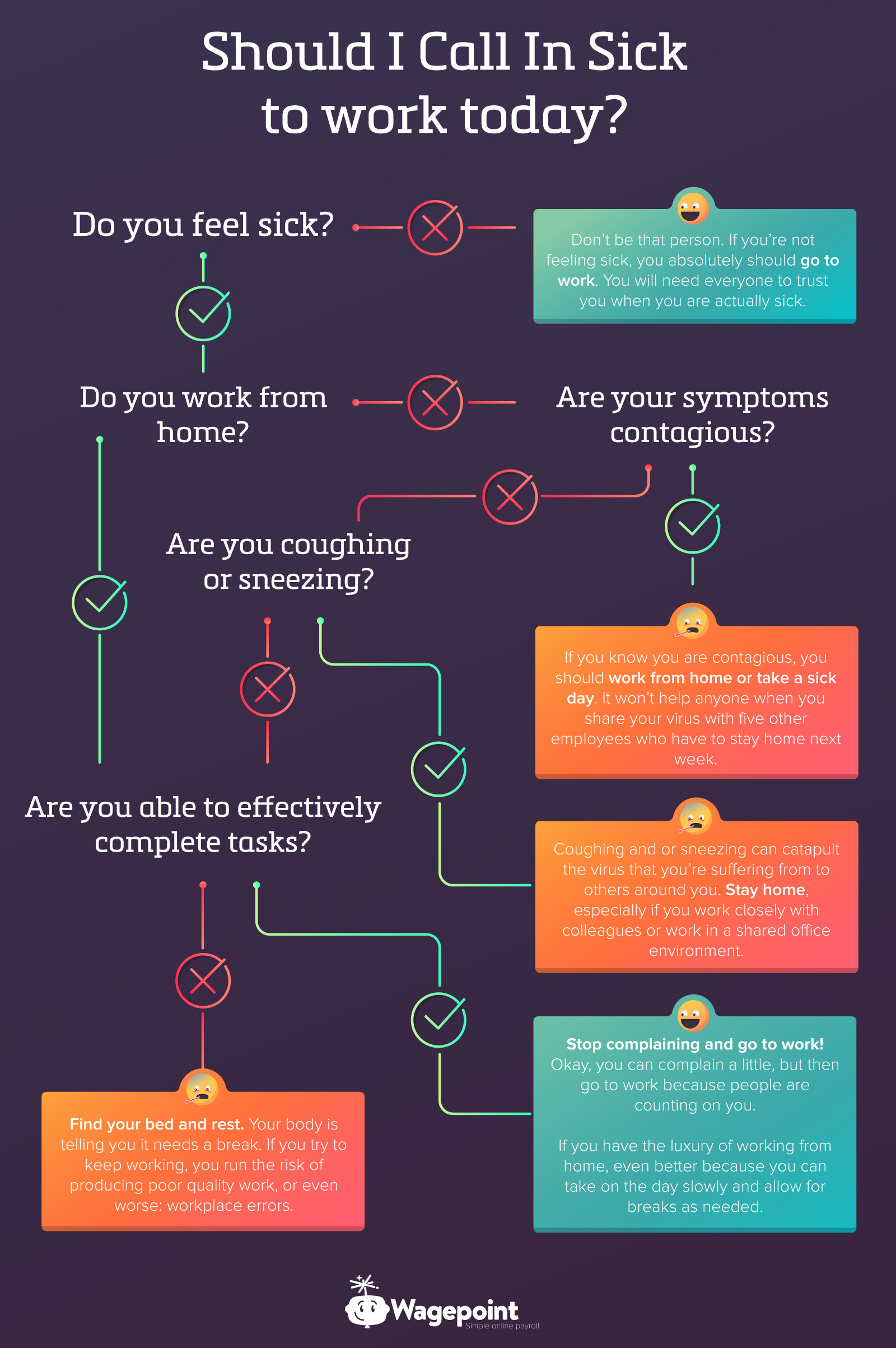Become an insider!
Get our latest payroll and small business articles sent straight to your inbox.

Should you call in sick to work today? Find out by using the infographic below!
It’s that time of year again. Have you started coughing? Sneezing? Feel a tickle in your throat? Maybe a virus hasn’t hit you yet, but you’ve seen your colleagues scuffling around the office with a box of Kleenex.
Cold and flu season typically begins in the fall and runs through the end of winter. As the days cool off, more and more of us remain inside – breathing in all the same air as the virus infected people around us.
We’re not talking zombies, although cold or flu symptoms may make you feel like one.
The PLOS Pathogens medical journal also concluded that both cold and dry conditions favor virus transmission, another reason you’re more susceptible over fall and winter months.
Your cold virus could be contagious up to a week before you feel sick and until all of your symptoms have subsided. If you have the flu, you could be contagious up to five days to a week after feeling initial symptoms. This medically reviewed article by Healthline can help you determine your level of contagiousness.
When should you or your colleagues call in sick?
To avoid the inevitability of getting sick in the fall/winter, you should wash your hands frequently, carry hand sanitizer and stay clear of anyone carrying a box of Kleenex. But if all falls and you’ve got a case of the flu, you can follow our handy infographic Should I Call In Sick to Work Today? to find out if you should stay home from work.
NOTE: This infographic is by no means a medical examination and shouldn’t be confused for one in a state of flu-induced delirium. If you require medical advice or attention, please contact your doctor or a healthcare practitioner.











